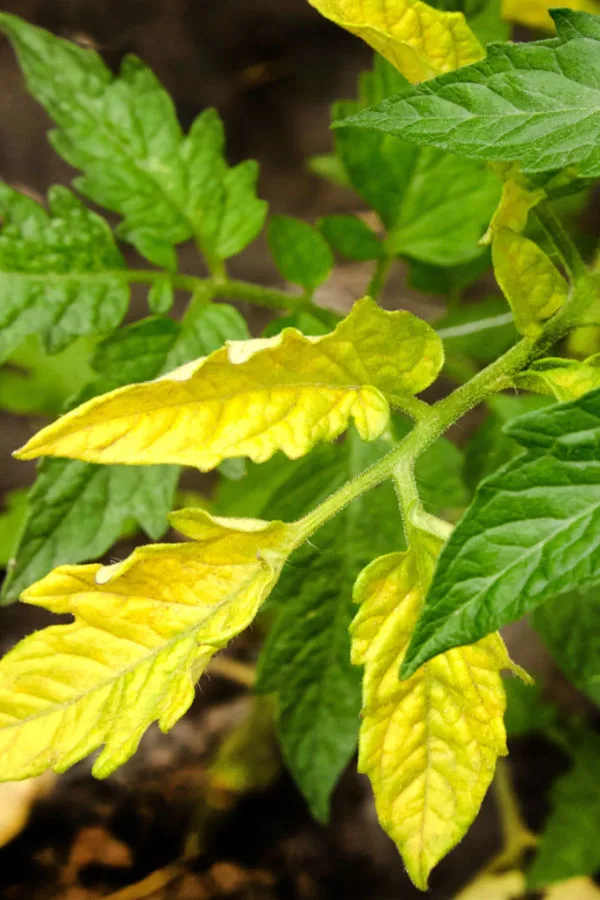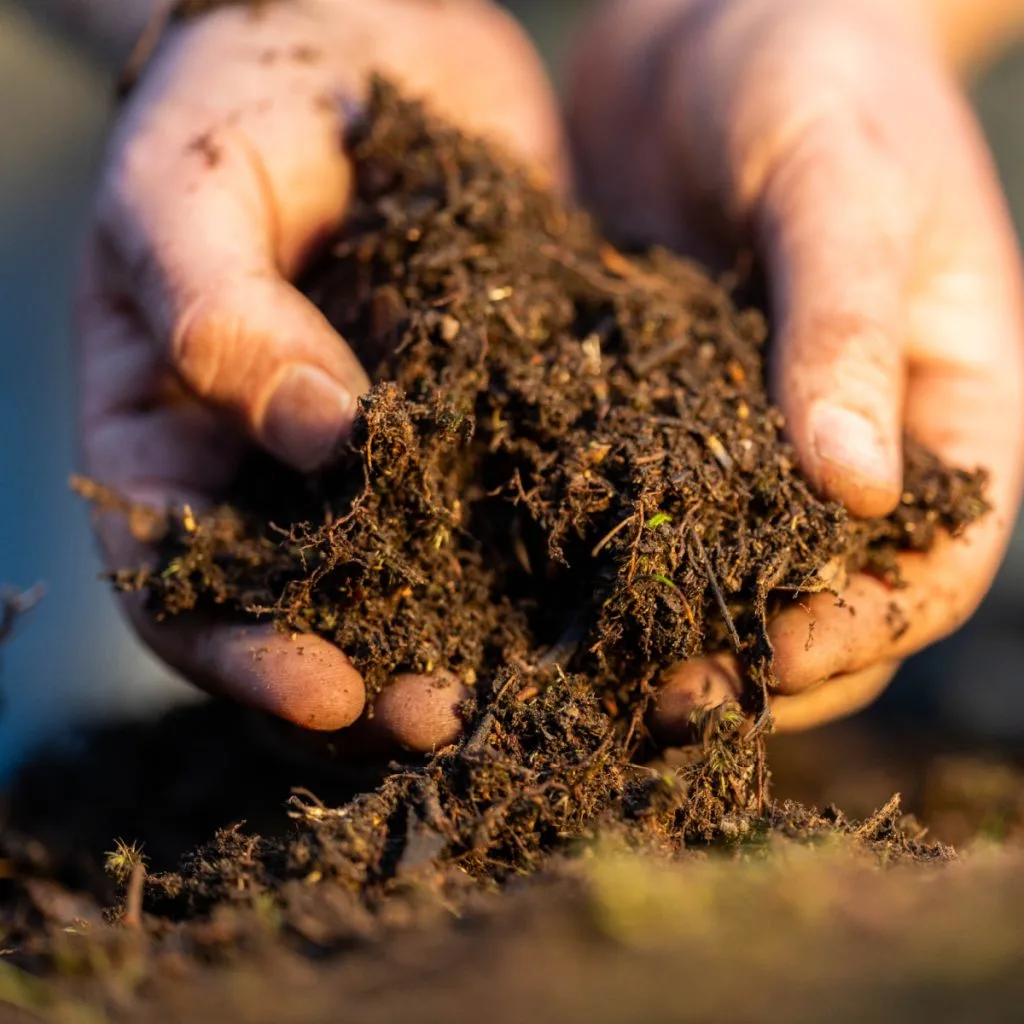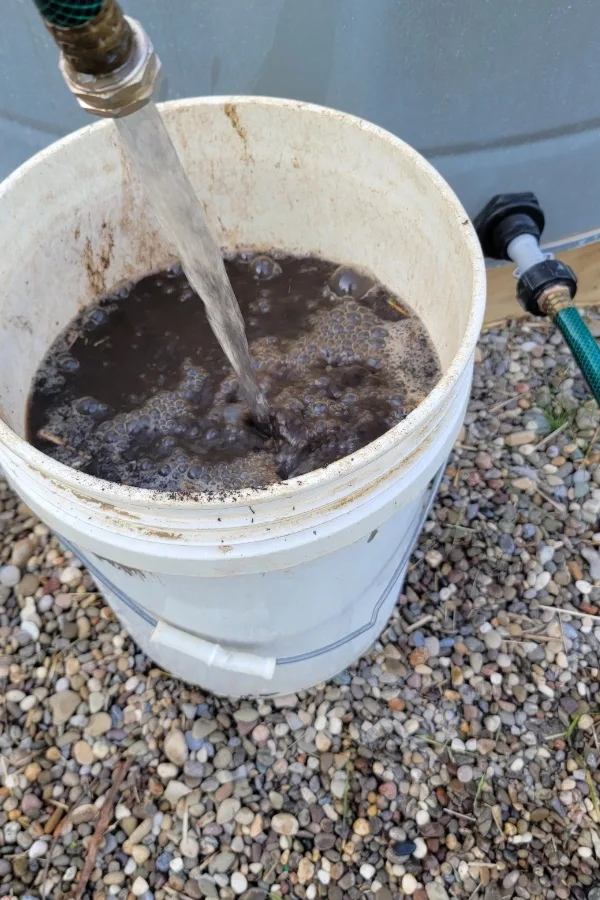If you’re looking for a natural and effective way to fertilize your tomato plants, compost tea might just be the perfect solution. It’s simple to make, easy to use, and completely organic. But perhaps best of all, if you make your own compost – it’s free to make!
Compost tea is packed full of nutrients that tomatoes love, and because it’s in liquid form, it delivers that energy right to the roots and even through the leaves.
Tomatoes are one of the most nutrient-hungry plants in the garden. To grow strong vines, thick stems, and large harvests, they need more than just soil – they need a steady supply of energy all through the growing season. And compost tea is a great way to do that without relying on synthetic fertilizers.

Whether you’re planting in a backyard garden, raised bed, or container, compost tea can help power your tomato plants all the way from transplanting to harvest. Here is a look at how compost tea works, why it’s so good for tomato plants, and exactly how to make and use it with just a few simple tools.
How To Fertilize Tomatoes With Compost Tea
What Is Compost Tea?
Compost tea is a liquid fertilizer made by soaking compost in water over time. As the compost sits and steeps in the water, the nutrients and beneficial microorganisms in the compost slowly seep out into the water.
After a few days, what’s left is a rich, dark, nutrient-filled tea that can be used to feed plants naturally. It’s called “tea” because of the way it looks and how it’s made – not because you want to drink it. This dark liquid may not look appetizing, but for tomato plants, it’s like a fresh cup of energy.
Compost tea is full of things plants need to thrive. That includes small amounts of nitrogen, phosphorus, and potassium, plus calcium, magnesium, and other important micro-nutrients. Even more, it contains beneficial microbes which are bacteria and fungi that help improve soil and boost plant health.
Why Compost Tea Works So Well To Fertilize Tomatoes
Tomato plants need a lot of nutrients throughout the growing season. As they grow bigger and start to flower and fruit, they use up the nutrients in the soil fast. If they don’t get enough to keep up, the plants can start to weaken, the leaves can turn yellow, and fruit production can drop off.

That’s where compost tea really shines. Because it’s liquid, it soaks into the soil quickly and reaches the plant’s roots fast. And unlike many chemical fertilizers, compost tea feeds the soil as much as the plant. The microbes in the tea continue working in the soil after application, helping to break down organic matter and release even more nutrients.
Even better, compost tea doesn’t just work through the soil. When sprayed on the leaves of tomato plants, it can be absorbed right through the surface of the foliage. That means the plant gets a quick boost of nutrients from both below and above.
It’s a one-two punch of natural power. And best of all – it’s safe to use every single week.
Two Ways To Fertilize Tomato Plants With Compost Tea
One of the biggest advantages of compost tea is that it can be used in two different ways. The most common way to use compost tea is watering the soil around your plant.
Once poured, the nutrients soak into the soil and head right to the roots. This helps your plants build strong stems, lush foliage, and plenty of energy for producing blossoms and fruit. Even better, the microbes in the tea begin to work in the soil, improving its structure and helping the plant take in more nutrients over time.

Compost tea can also be sprayed right on the leaves of tomato plants. This is called foliar feeding. Tomato leaves can take in nutrients through their surface, especially early in the morning or late in the day when the pores on the leaves are open.
Foliar feeding gives your tomato plants a fast boost of nutrients. And because compost tea also contains helpful bacteria and fungi, it may even help protect the leaves from common diseases like blight and mildew. When using as a foliar spray, it’s best to strain the tea well first so it doesn’t clog your spray bottle or sprayer.
How To Make Compost Tea With Just A Few Supplies
You don’t need fancy tools or expensive gadgets to make compost tea. In fact, with just a 5-gallon bucket, some compost, and a stick for stirring, you can have a batch ready in about a week to fertilize your tomatoes.
What You’ll Need:
- 1 five-gallon bucket
- 2 to 3 cups of finished compost (well-aged and fully broken down)
- Water (rainwater or dechlorinated tap water is best)
- A stick or large spoon for stirring
- Fine mesh or cheesecloth (optional, for straining)

Step-by-Step Instructions:
- Fill The Bucket With Water
Start by filling your 5-gallon bucket about three-quarters full with water. If you’re using tap water, let it sit out for 24 hours so the chlorine can evaporate. Chlorine can harm the beneficial microbes in the compost. - Add The Compost
Add 2 to 3 cups of finished compost to the water. You can dump it in loose or place it in a cloth bag or old pillowcase to make straining easier later. - Stir Daily
Using your stick or spoon, stir the compost tea a few times a day—at least twice. This helps keep the mixture oxygenated and allows the nutrients and microbes to spread into the water. Stirring also prevents the compost from settling at the bottom and going anaerobic. - Steep For 7 to 10 Days
Let the mixture sit and steep for a full week to ten days. Keep the bucket in a shady spot out of direct sunlight. After a few days, the water will darken and take on a rich, earthy smell. That’s how you know it’s getting good. - Strain (Optional)
If you plan to use the compost tea in a spray bottle, it’s a good idea to strain it through cheesecloth or an old t-shirt. This keeps bits of compost from clogging the sprayer. If you’re just pouring it around the base of the plants, straining isn’t necessary.
How To Use Compost Tea On Tomato Plants
Once your compost tea is ready, you can begin applying it right away – and you can use it once a week throughout the growing season. Unlike synthetic fertilizers, compost tea won’t burn your plants, even if you use it regularly.

When watering plants, use about 1/4 of a gallon of compost tea per tomato plant. Pour it slowly around the base so it soaks in deep. It’s best to apply early in the morning so the roots have time to absorb the nutrients throughout the day.
When spraying plants, just fill a clean spray bottle or garden sprayer with strained compost tea. Next, lightly mist the leaves of each tomato plant, making sure to get both the tops and undersides. Spray in the early morning or evening, not during the heat of the day. This helps prevent sunburn and allows better absorption.
You can begin using compost tea a few weeks after transplanting your tomato seedlings and continue using it weekly until harvest season winds down. It works just as well on young transplants as it does on mature fruiting plants.
With just a bucket, a little compost, and some water, you can give your tomato plants one of the most natural and effective boosts around. Compost tea is not only simple and safe, but it also helps you grow bigger, healthier, and more productive plants without relying on chemicals or expensive fertilizers. For more tips on fertilizing your tomato plants throughout the growing season, see: How To Fertilize Tomato Plants Once They Start Producing – Keeping Plants Going Strong!
For more great info on growing tomatoes, check out our article: The Best Way To Mulch Tomato Plants – 3 Simple Secrets To Protect & Power Your Tomatoes!
I Grow Tomatoes
Follow Our Facebook Page For Even More Great Tomato Growing Tips! I Grow Tomatoes Facebook Page
I Grow Tomatoes is a website created for those who love all things about tomatoes – from planting and growing – to cooking and canning! We publish two articles every week, 52 weeks a year. Sign up today to follow via email! This article may contain affiliate links.
